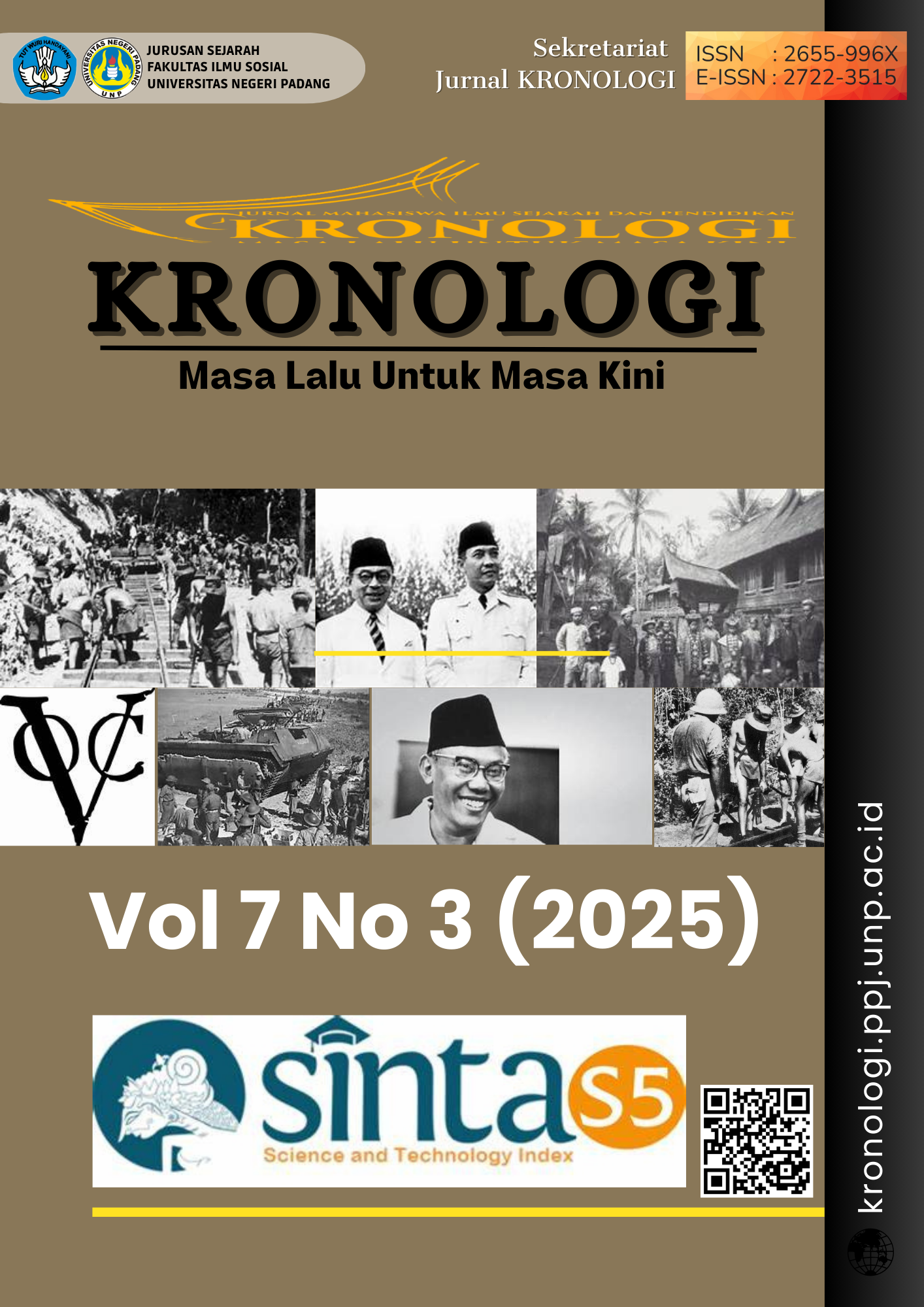Syekh Mudo Abdul Qadim Belubus dan Strateginya dalam Mengajarkan Tasawuf (1905-1957)
Abstract
Lima Puluh Kota Regency is recognized as a center of Sufi teachings, commonly known as tarekat, which have developed continuously from the 17th to the late 20th century. Among the dominant orders in this region is the Naqshbandiyah. A key figure in the expansion of this Sufi order was Sheikh Mudo Abdul Qadim Belubus, a murshid at Surau Belubus, widely known among scholars of the Naqshbandiyah and Samaniyah orders. At the time, Sufi teachings were met with skepticism and were often labeled as bid’ah by the general public, requiring strategic efforts to foster acceptance. This study aims to examine Sheikh Mudo Abdul Qadim's strategies in teaching Sufism within a socially challenging context. It employs the historical method, consisting of heuristics, source criticism, interpretation, and historiography, supported by field data through in-depth interviews with key informants such as Buya Suhanda and Datuk Ineh. The research also explores Sheikh Mudo’s manuscripts, including As-Sa’adatul Abdiyah, Risalah Tsabitul Qulub, and Al-Manak, which underscore his authority as a Sufi scholar. The findings reveal that Sheikh Mudo’s strategies include: (1) utilizing Silek Kumango, a traditional martial art, as a medium to introduce the Naqshbandiyah order; (2) using the Samaniyah order as an intermediary step into the Naqshbandiyah; and (3) applying religious and social approaches such as bil-hikmah, wise counsel, and mujadalah (dialogue). This study highlights the success of integrating Sufi teachings with local cultural practices, and contributes significantly to the discourse on culturally rooted da’wah and the history of Sufi orders in Minangkabau.



2.jpg)






